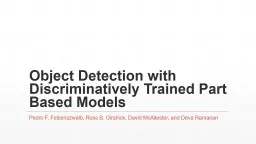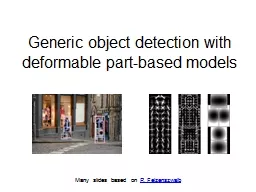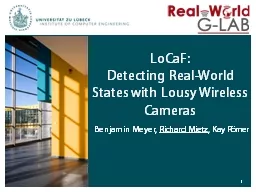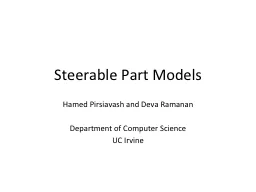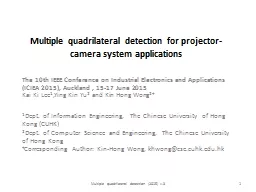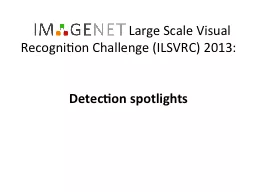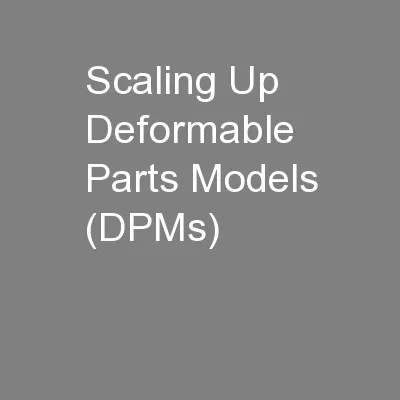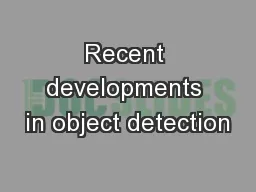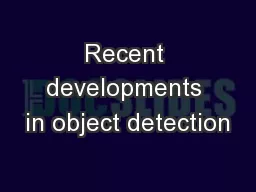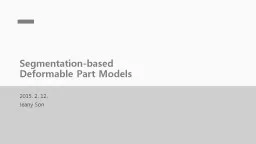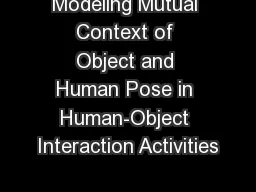PPT-Object Detection with Discriminatively Trained Part Based Models
Author : test | Published Date : 2018-11-06
Pedro F Felzenszwalb Ross B Girshick David McAllester and Deva Ramanan Motivation Problem Detecting and localizing generic objects from categories eg people
Presentation Embed Code
Download Presentation
Download Presentation The PPT/PDF document "Object Detection with Discriminatively T..." is the property of its rightful owner. Permission is granted to download and print the materials on this website for personal, non-commercial use only, and to display it on your personal computer provided you do not modify the materials and that you retain all copyright notices contained in the materials. By downloading content from our website, you accept the terms of this agreement.
Object Detection with Discriminatively Trained Part Based Models: Transcript
Download Rules Of Document
"Object Detection with Discriminatively Trained Part Based Models"The content belongs to its owner. You may download and print it for personal use, without modification, and keep all copyright notices. By downloading, you agree to these terms.
Related Documents

